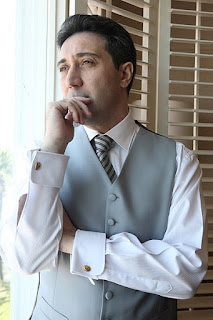Eduardo De Filippo - Neapolitan dramatist
Playwright captured essence of city's spirit
One of Italy’s greatest dramatists, Eduardo De Filippo, died on this day in 1984 in Rome at the age of 84. An actor and film director as well as a playwright, De Filippo – often referred to simply as Eduardo – is most remembered as the author of a number of classic dramas set in his native Naples in the 1940s that continue to be performed today. Arguably the most famous of these was Filomena marturano, upon which was based the hit movie Marriage, Italian Style, which starred Sophia Loren and Marcello Mastroianni under the direction of Vittorio de Sica. De Filippo’s other memorable works included Napoli Milionaria, Le voci di dentro and Sabato, domenica e lunedi. All of these plays showcased De Filippo’s ability to capture the essence of life in Naples in his time, particularly in the working class neighbourhoods that he felt were the beating heart of the city. Rich in Neapolitan dialect, they were often bittersweet comedies of family life. They were social commentaries in which typical themes were the erosion of morals in times of desperation, the struggle of the downtrodden to retain their dignity and the preservation of family values even in the most poverty-stricken households. Read more…
_________________________________________________________________
Bud Spencer – swimmer-turned-actor
Competed at two Olympics before turning to screen career
The actor known as Bud Spencer was born Carlo Pedersoli on this day in 1929 in Naples. He was best known for the series of so-called spaghetti westerns and comedies he made with another Italian-born actor, Terence Hill. Hill was from Venice and his real name was Mario Girotti. They began their partnership in 1967 in a spaghetti western directed by Giuseppe Colizzi called God Forgives…I Don’t! and were asked to change their names so that they would sound more American. Pedersoli came up with Bud Spencer because his movie idol was Spencer Tracy and his favourite American beer was Budweiser. The two would go on to make 18 movies together, with westerns such as Ace High (1968) and They Call Me Trinity (1970) winning them box office success. As Carlo Pedersoli, he had already achieved a measure of fame as a swimmer, the first Italian to swim the 100m freestyle in less than one minute. He represented Italy at the Olympics in Helsinki in 1952 and Melbourne four years later, on each occasion reaching the semi-final in the 100m freestyle. He also played professional water polo, winning an Italian championship with SS Lazio and a gold medal at the 1955 Mediterranean Games in Barcelona. Read more…
_________________________________________________________________
Galileo Ferraris - electrical engineer
Pioneer of alternating current (AC) systems
The physicist and electrical engineer Galileo Ferraris, who was one of the pioneers of the alternating current (AC) system for transmitting electricity and invented the first alternators and induction motors, was born on this day in 1847 in Piedmont. The AC system was a vital element in the development of electricity as a readily-available source of power in that it made it possible to transport electricity economically and efficiently over long distances. Ferraris did not benefit financially from his invention, which is still the basis of induction motors in use today. Another scientist, the Serbian-born Nikola Tesla, patented the device after moving to the United States to work for the Edison Corporation. Tesla had been working simultaneously on creating an induction motor but there is evidence that Ferraris probably developed his first and as such is regarded by many as the unsung hero in his field. He saw himself as a scientist rather than an entrepreneur and, although there is no suggestion that his ideas were stolen, openly invited visitors to come in and see his lab. Unlike Tesla, he never intended to start a company to manufacture the motor and even had doubts whether it would work. Read more…
Home












































